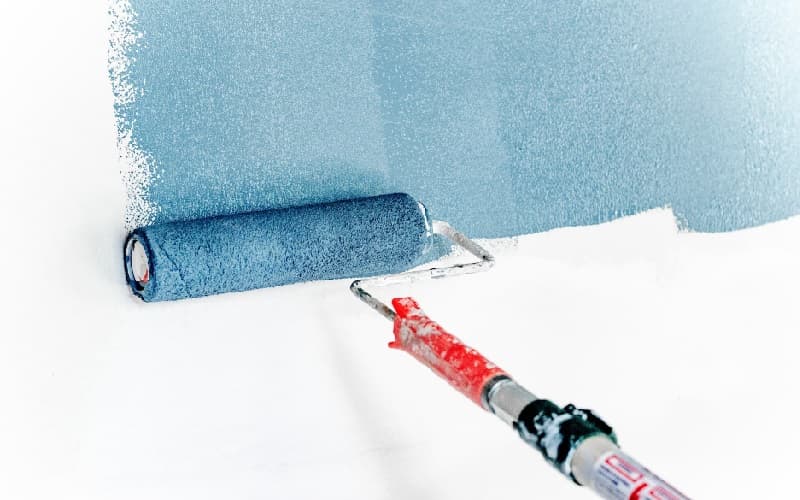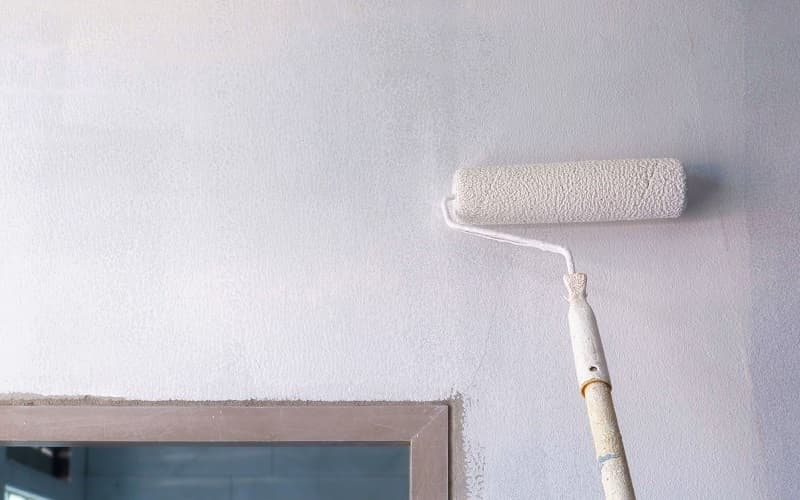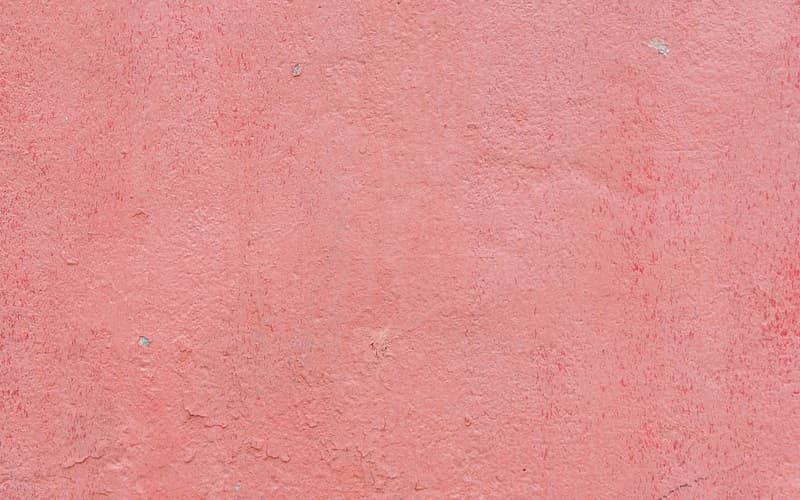Priming your surface before painting is a smart move to obtain good adhesion. Some people like to use oil-based primers but prefer latex paint. Is it possible? Can you paint latex over oil-based primer?
You can use latex paint over an oil-based primer. Paint enthusiasts agree that using latex on an oil-primed surface provides a high-quality and lasting result. Using water-based paint over an oil-based primer also reduces your time to finish your painting task.
Of course, prepping the primed surface is a must to achieve an excellent result. Read on because I will discuss how you can prepare the oil-primed surface before painting. I will also explore what happens if you skip the necessary surface preparation.

Will Latex Paint Adhere to Oil-based Primer?
Latex has no problem adhering to an oil-based primer. As long as the oil primer is completely dry before you start painting, there should be no issues. The dried primer has no characteristic that would prevent latex adhesion.
Why do you need to wait until the oil-based primer dries up before applying your latex paint?
It is general knowledge that oil and water don’t mix. You will likely bump into issues if you paint latex while the oil is still in the primer. Therefore, you must wait until the oil-based primer dries up to avoid compromising the result.
If you decide to use an oil-based primer, you need a lot of patience to wait. The primer may take a few hours to dry completely. The primer has dried if it doesn’t smell bad anymore.
If your painting project is not in a rush, I suggest you wait 24 hours to ensure the primer is ready for preparation. You must prepare the surface to achieve better adhesion and good overall quality.
Surface preparation is something that most people ignore or skip. However, you need to realize that it could save your maintenance budget if you do it.
How to Prepare Oil Primed Surface to Paint With Latex Paint?

Preparing the primed surface ensures that the latex paint adheres better. Although this additional process prolongs the time you spend on the project, you should not skip it. Taking shortcuts gives you regrets.
Below are the things you will need to prepare oil primed surface:
- Hand gloves
- Goggles
- Protective mask
- 180 grit sandpaper
- Sponge or tack cloth
- Absorbent cloth
- Cleaning solution
- Water
You may start preparing the primed surface when you have all you need. Below are the general primed-surface preparation steps.
Step 1: Ensure the primer is dry
Oil-based primers have a longer drying time than water-based primers. This fact is one of the reasons why other people prefer water-based primers. The rule of thumb is to let the primer dry for a day before preparing the surface. Doing this will ensure that it has dried completely.
You can do a smell test to confirm that the primer has dried. A primer is still wet if you can smell its fumes or the odor of the chemicals. Alternatively, you can touch the primer and check that no paint residue sticks to your finger before sanding the surface.
Step 2: Suit up to protect
It is always best to wear protective hand gloves, a mask, and goggles. Sanding the primer is part of the process. The primer dust may cause skin and eye irritations or enter your lungs.
You will experience various possible issues if you do not wear these protections while working on a primer. The issues you may get include, but are not limited to, headaches, fatigue, confusion, dizziness, and nausea.
Step 3: Start sanding
Sanding the oil-primed surface is a must to obtain a stronger bond. The 180-grit sandpaper will help fix tiny surface imperfections. But the very purpose of sanding is to create small holes to ensure the bond between the primer and the paint.
Only gentle sanding is required, but you must ensure that you do it on the entire surface. You don’t want paint peeling off in some areas because these areas were not sanded. Sanding requires a lot of patience as it takes time to complete.
You can sand your surface manually as long as it is manageable. You can also use a palm sander or an orbital sander. However, if you are working on a huge surface, you may need to use the latter as it allows you to sand bigger areas more quickly.
Step 4: Clean the surface
After sanding, you need to clean or dust off the surface. Wash the sanded surface using water or water mixed with a cleaning solution. You can use a regular sponge for this process.
Failure to remove the dust from the surface will affect the overall quality because the dust could mix in the paint as you roll your paint roller. There is a tendency that dust will cause bonding failures. The dust may also affect the drying time of the paint.
You may wonder, why can’t I dust off the surface using a blower? Why do I need to wash it? You need to wash the surface to ensure that all tiny particles are removed.
Blowing your surface with an air compressor may remove the dust, but the dust can just come right back into the surface when you turn off the compressor. So, the better option is to wash it. This article provides several options for removing sanding dust from a wood surface after sanding.
Step 5: Dry the surface
The final step is to dry the surface after washing. You can use an absorbent cloth to speed up the drying process. If you do not like the wiping process, let the surface dry within an hour or two.
Of course, you must do a final check before spreading the paint. The drying period of your surface may vary depending on the ventilation and the temperature. Spot-check the surface and ensure it has dried before you take the first stroke of your paintbrush.
Voila! When you see that your surface has dried well, your oil-primed surface is now ready for painting with latex.
What if You Don’t Prepare the Oil-primed Surface Before Painting Latex?

The paint can peel off if you do not prepare the oil-primed surface. This event is due to poor adhesion. Preparing your surface is simply the process of sanding it to create holes, which strengthens the bond between the paint and the primer.
Paint your latex directly into the oil-primed surface may also result in an ugly finish. Do you want to settle for an inferior or low-quality result? I don’t think so.
You may have searched or heard from people around that sanding is not a must. However, you should know when to sand and when not to do it. It may not always be necessary. But if you paint an oil-primed surface with latex or any paint, I strongly suggest you do not skip this surface preparation process.
How Long Should Oil-based Primer Dry Before Painting?
The waiting game is one of the reasons why others prefer a water-based primer. However, an oil-based primer is best for painting porous or fresh wood because it seals better than the water-based counterpart.
Also, if you’ve already purchased an oil-based paint as your top coat, it is essential to oil-prime your surface. Oil-based paint may not work well on water-based primers.
Oil-based primers dry within at least 8 hours. However, paint experts suggest allowing 12 to 24 hours before coating it with latex. It is better to continue the job the following day to ensure that the primer has dried well.
The tin can of the oil-based primer should also include information about its drying time. But if it does not, you can follow the general rule. I think it is worth mentioning that several factors could affect the drying time of an oil-based primer.
These include:
- The thickness of your coating, the surface you are priming
- The brand you are using
- The ventilation of the area, and
- The temperature and humidity level
There have been some cases where a primer does not dry within the expected drying time. The common reason for this scenario could be the weather, the thickness of the primer, or the primer itself.
Most people always prefer to use new stock of primer. I suggest you purchase your primer from a store that does not display old paint stocks. An old can of primer may give you some delayed drying time.
What Other Types of Paint Can You Use Over Oil-based Primer?
Oil-based primers usually don’t have issues with whatever top-coating paint you choose. Generally, any paint can stick to an oil-based primer, provided you will prepare it before painting. It means that you can use any water-based and oil-based paints.
Many also ask if it is better to use acrylic paint on oil-based primer than latex. I must say that the primer has nothing to do with whatever top coat you choose. As almost all types of paints work on an oil primer, you now have to decide which paint to use based on your preferred result.
Each paint formula has unique characteristics. Latex paints, for example, are generally non-toxic, dry quicker, and offer many finish options. If you are painting an outdoor surface, it may be best to use acrylic paints because they are more durable and do not fade easily.
There is a particular paint that combines the advantage of acrylic and latex. Paint manufacturers have formulated acrylic latex paint with enhanced adhesion and improved temperature resistance. This type of paint can work over an oil-based primer.
Of course, if you want to be consistent, you can use oil-based paints over your oil-primed surface. You would likely get a good result because the paint and the primer are oil-based. However, due to dry time requirements, many prefer latex or acrylic over oil-based paint.
Painting involves multiple coats, and you must wait for the first coat to dry before adding another. So, if you use an oil-based primer and apply a couple of coats, you will need at least 24 hours to wait for your primer to dry.
Then, if you decide to use an oil-based paint, it also has a similar drying time as the oil-based primer. In other words, if you are working on a painting project and you want to complete it in a shorter period, water-based paint is ideal.
FAQs
Both primers have their unique characteristics and purpose. Oil-based primers are best for damp surfaces and fresh or unfinished wood. On the other hand, water-based primers are generally used on walls, ceilings, and furniture. Water-based primers are less toxic and inexpensive compared to oil-based, but the latter is more durable.
Preparing the primed surface is critical in achieving a high-quality result. You need to allot more time to sand the primed surface to ensure that the paint and the primer can obtain a stronger bond. The common issues with not preparing the surface are paint peeling and ugly finish.
It depends on the requirement. To be consistent, you can use oil-based paint over an oil-primed surface. Oil-based paints are popular for outdoor projects because of their known durability. On the other hand, water-based paints are commonly used for indoor projects because they contain fewer toxins.
Conclusion
Using latex paint over an oil-primed surface is okay. You can technically paint an oil-based primer with any paint. What you need to ensure is to properly prepare the primed surface by sanding it with 180-grit sandpaper.
Sanding and cleaning the primed surface is a must to ensure better adhesion failure to do this will result in paint peeling. The best way to clean sanding dust is not by using a blower or an air compressor but by washing the surface using a sponge and water.
